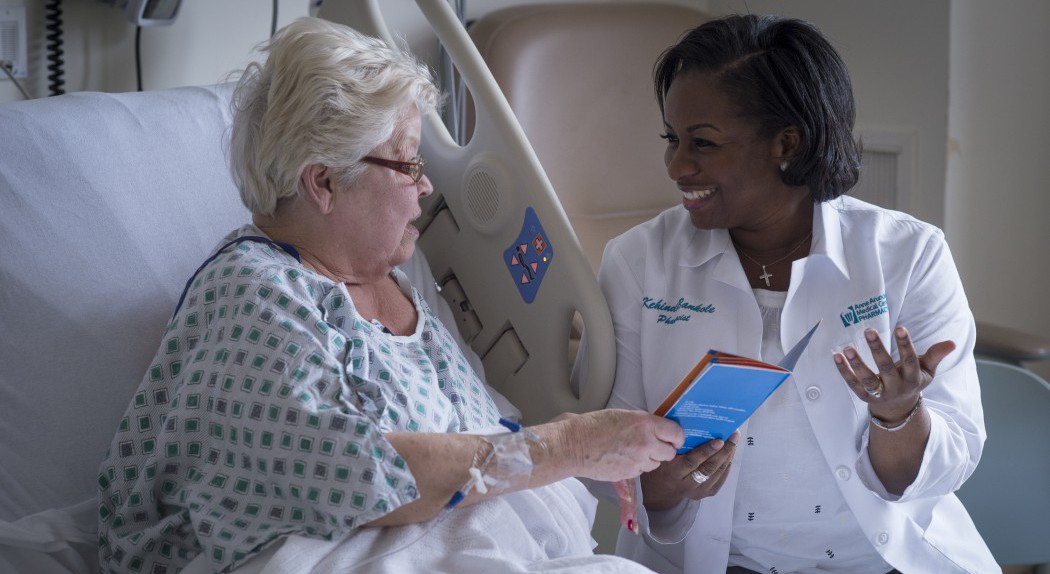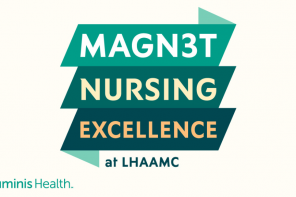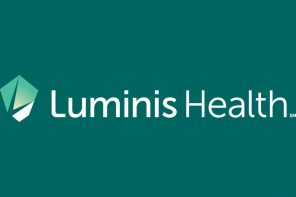Recently, AAMC pharmacists Adrienne Belton and Lucretia Jones used their professional expertise to help a patient on the oncology unit understand how and when to take her medications. They talked with her at length, providing guidance on when to take them, how often, which medications should be taken with food, and possible side effects to look out for. Then they went a step further and assisted the patient in obtaining her medications at the lowest available cost so she could afford them. The patient left the hospital feeling confident in her ability to follow her new medication regimen.
These pharmacists embody an emerging role of the pharmacist in the hospital, directly interacting with patients, families and care teams to provide needed medication reconciliation and medication education.
Previously, pharmacists spent the majority of their time in the centrally-located inpatient pharmacy performing tasks including dispensing medication, monitoring drug therapy, preparing IV medication, and sterile product preparation. They consulted with physicians and nurses via phone about patients’ therapy, but they almost never visited the units or talked directly with patients and families.
Besides the obvious benefits of having a pharmacist do face-to-face consults with patients, families and providers, other potential benefits include decreasing drug costs, reducing hospital re-admissions and increased patient safety and satisfaction.
But workflow inefficiencies weren’t providing pharmacists time to talk with patients. Their responsibilities were too broad, leaving them little time for face-to-face patient interactions.
So, a team made up of pharmacy leaders, physicians, a nurse, a performance improvement specialist, and an IT specialist, worked together to redesign the pharmacist’s workflow to prioritize work and allow for greater patient interaction.
Some of the improvements they made are:
- They worked with physicians and nurses to increase awareness of pharmacists as an available resource for medication utilization review, medication reconciliation and patient education.
- They enhanced Epic, the electronic medical record system, to make it easier to prioritize high-risk patients for medication review and education.
- They collaborated with the charge nurses to improve communication around patient discharges so that the pharmacists could prioritize educating patients who are ready for discharged about their medications.
The goal is to free up a total of six hours per day for up to 30 patients to be seen on the units by pharmacists. This will help to ensure these patients receive the appropriate medications while they are here and understand their medications before they go home. They are also spending more time reviewing drug utilization with physicians, educating them on newly available drugs, risks and interactions. This has helped improve medication safety, lower drug costs and increase physician and patient satisfaction.




